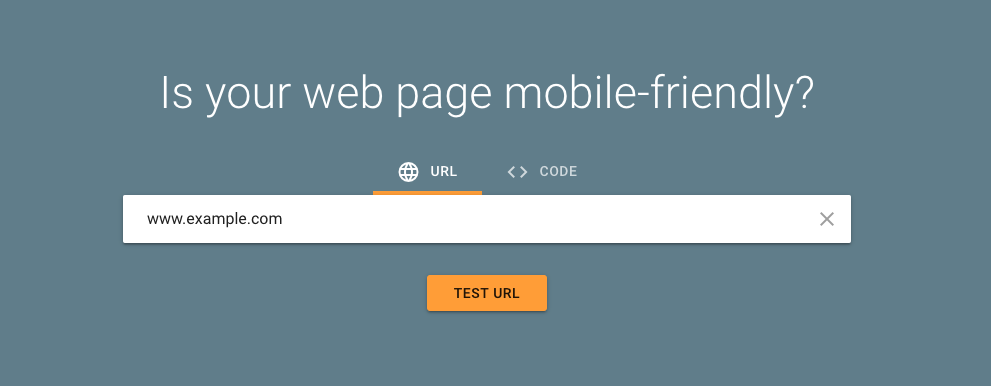SEO can be a moving target.
It’s very likely that you’ve heard of search engine optimization (SEO). You probably know a thing or two about it as well—you need keywords in your page content, your website has to load quickly, etc…
But the truth is, while some SEO best practices are more important and impactful than others, Google has over 200 individual ranking factors. And that can be a lot to keep tabs on, even for seasoned marketers.
So, in this article, we’ll try to make SEO a bit more approachable with a handful of super important, must-have optimization considerations for your small business website.
Here are 6 essential SEO guidelines you need to follow to ensure you’re staying competitive in local search.
1. Well organized, error-free, valuable content
Yes, we’ve all heard that old “content is king” gem. Cliche as it might be, search engines have evolved quite a bit over the years, and interestingly enough they are employing highly technical machine learning to get as close as possible to understanding, well, natural human language. Keywords and internal links are still important, just be sure you’re writing for your customers first and search engines second.
Ok, with that out of the way, on to some more technical stuff.
2. Website performance and site speed
This one’s a biggie. According to Pingdom.com data, the average website load time is just over 3 seconds. This means that users will expect websites to load in just about that time. Any longer than a few seconds, your risk of a “bounce” (or a user hitting the back or close buttons), increases substantially. And because Google’s main priority is user satisfaction, high load time will surely have an impact on your ability to rank above your competitors.
3. Mobile-friendliness
Recently, Google updated its search algorithm to prioritize the mobile-friendliness of websites. What does that mean for you? Well, quite simply, your site’s ranking in large part will be judged by the speed, layout, and presentation of your mobile website. Lovingly dubbed “Mobilegeddon” by industry experts, it’s more important than ever that small businesses optimize their mobile website experience.

4. Well-organized page structure
It’s important to understand that the way in with search engine robots (also referred to as “crawlers”) access and understand your website is through your page structure and, more specifically, hyperlinks within your website. Therefore it is critical that your website be logically organized, with pages split into grouped categories using descriptive, well-formatted URLs.
For example, say you’re the owner of a local vegan bakery (yum!). Your website’s sitemap might want to look something like this:
- https://www.example.com
- https://www.example.com/about-us/
- https://www.example.com/products/
- https://www.example.com/products/vegan-breads/
- https://www.example.com/products/vegan-desserts/
- Etc…
Notice the URLs above contain “parent” categories of “/products/” and are all consistently formatted with hyphens. These are considered search engine-friendly “pretty URLs.” You can read more about pretty URLs here.
5. Title Tags and heading structure
Pillars of on-page search engine optimization, your “Title Tags” (also known as SEO titles) and page headings are super important in helping you to reach your ranking goals.
The title tag is often one of the first places search engine crawlers look to understand the content and context of a page. And they better the crawlers understand your page’s content, the better opportunity you have to rank for a related keyword or phrase.
Your title tag should begin with a concise description of what that page is about, including your target keyword, and end with your business name ( e.g. “Vegan Bread Products | Vinny’s Bakery”).
Similarly, your page headings and subheadings should be logically organized into H1’s, H2’s, H3’s, etc… and be short, descriptive, and contain the keywords or phrases you want to rank for (e.g. “Vegan Desserts”).

6. 3rd party ranking signals
Last but not least, you can create an impeccable user experience, complete with snappy mobile performance and flawless SEO, but on-page factors aren’t the only ingredient in the “rank above your competitors” recipe. While website optimization is essential, Google’s search engine algorithm also takes many critically important external, authority-based ranking signals into account as well. Here are just a few:
- Search CTR (click-through-rate)
- Social engagement
- Customer reviews
- Quantity of external links pointing back to your website
- Quality and relevance of external links pointing back to your website
So, if you’ve got a great website but no Google My Business listing or other footprints across the web, search engines will happily allow competitors that meet the criteria to rank well above you in search.
Ranking above your local competitors requires education, energy, and a bit of time.
To reference another old cliche, Rome wasn’t built in a day. Fortunately, you can establish a presence among your competitors in search fairly quickly using many of the tactics above, but in order to remain on top for years to come, you’ll need to consistently review the competition and fine-tune your own online presence over time.




